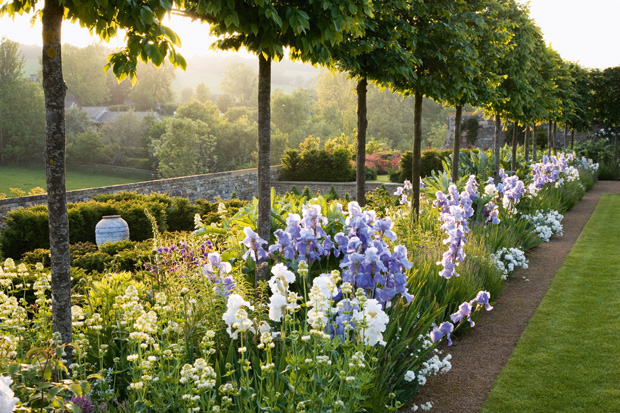I’ll own up at once. Tim Richardson and Andrew Lawson, the author and photographer of The New English Garden (Frances Lincoln, £40, Spectator Bookshop, £30), are friends of mine — no very unusual circumstance in the small world of garden writing. Moreover, I wrote this book’s forerunner, The English Garden, also in collaboration with Andrew Lawson. However, my reputation would falter if I sold you an expensive pup so, if I tell you that The New English Garden is one of the more important and interesting gardening books published this year, you may believe me.
The book looks at 25 innovative gardens or public spaces that have either been made, or re-made, since 2000. By that time, garden designers had comprehensively turned away from Arts and Crafts, which had been the predominant style in large gardens for nearly a century, emboldened by some pretty rich and trusting patrons — the beneficiaries, very often, of the bankers’ bonus culture. Instead, garden designers have embraced a rather humane modernism, using plants in the New Perennial style, although there are plenty of other influences at work as well — such as conceptualism (illustrated by Angel Field in Liverpool), eclecticism (Highgrove) and historicism (Hanham Court).
Richardson writes elegantly and perceptively, even if, on occasion, his landscape design-speak risks losing the general reader. Lawson’s photographs are of sparkling quality and depth, beautifully reproduced on expensive paper. This book is not perfect: the reader would be much helped by a plan of each of the gardens described; and the text and the pictures do not always tally as well as they might. But these are minor irritants, not major faults.
The gardens range from Tom Stuart-Smith’s Mount St John and Trentham, to Dan Pearson’s Armscote Manor, the Sheffield School’s Olympic Park, and the strange Plaz Metaxu, a garden in Devon inspired by the worship of Greek gods, especially Pan. You will be left at the end with a profound admiration for the skills and vision of contemporary garden designers, and the courage and deep pockets of their patrons.
A love of the daffodil, or yellow fever as it is known, is infectious, especially if you live in this country, where daffs grow — accidentally or on purpose — everywhere. Surprisingly, it is many years since there has been a readable monograph of this genus of 27,000 cultivated varieties, and it is to Noel Kingsbury’s credit that he had taken on the task of explaining to the general reader the present complex state of play with Narcissus.
In Daffodil: The Remarkable Story of the World’s Most Popular Spring Flower (Timber Press, £17.99, Spectator Bookshop, £16.19), Kingsbury explains the many different classifications of this flowering bulb, then relates its history, from burial in the tombs of the Pharaohs to the present day, emphasising the flower’s place as an important symbol of annual renewal before describing, with relish, a number of idiosyncratic, even obsessive, growers and breeders, with picturesque names like the Brodie of Brodie and Ron Scamp, who have devoted their lives to improving a flower which was beautiful to begin with. Daffodils are no longer simply golden, they are white, pink, orange, even green. They have long or short trumpets, and now ‘split coronas’ as well, and it is obvious that there are more developments in train. The photographs by Jo Whitworth are handsome and generously scattered throughout the book.
The Drunken Botanist: The Plants that Create The World’s Great Drinks (Timber Press, £14.99, Spectator Bookshop, £13.49) looks like one of those books a young relative (who knows you are both a boozer and a gardener) thinks you might like as a present, and picks up in a great hurry in Waterstone’s on Christmas Eve. It has a horribly noisy cover and the internal design is bitty and distracting. Don’t be put off, however, for this book is by Amy Stewart, who is an entertaining and extremely knowledge-able American natural history writer— her book The Earth Moved, on the natural history of earthworms, is great fun and most illuminating. In other words, bash your way through the undergrowth of drink and infusion recipes to reach descriptions of pretty well every alcoholic beverage you can think of, together with the plants used in theirmanufacture.
Her aim is to deepen our appreciation of what the plant world has done to brighten our lives. The writing can be arch at times, treating alcohol as inherently amusing, which it isn’t always, but that is a small criticism, set against how much there is of interest to the curious. I can’t forget the story of the American botanist, sent during the second world war to find cinchona bark in Colombia, who managed to buy pure quinine, smuggled out of Germany, from a bunch of corrupt Nazi agents. This book is like a heady cocktail, to be sipped slowly and reflectively.






Comments